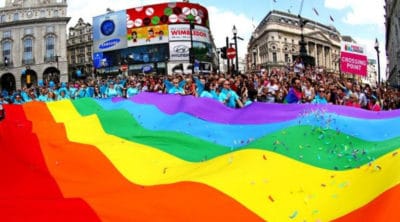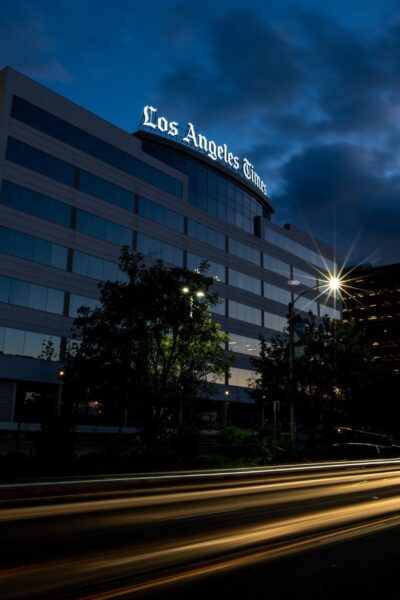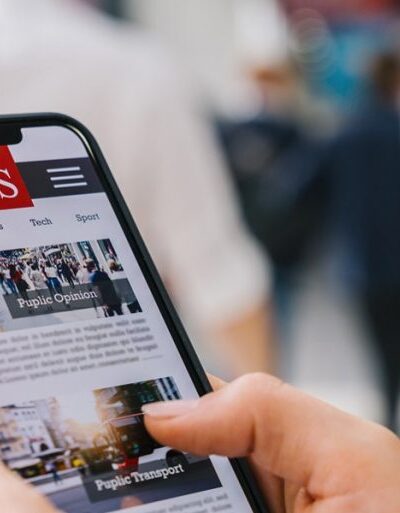Fifty years after the police raid of the Stonewall Inn bar in New York that became a catalyst for gay rights, media treatment of the LGBTQ+ community has made extensive progress, yet continues to have setbacks and many areas for improvement.
Representations of LGBTQ+ people in news and entertainment began a significant increase in the 1990s – prominently exemplified by Ellen DeGeneres’s coming out on mainstream American television in her hit ABC sitcom, Ellen. Portrayals of lesbian women and gay men have continued to increase over the two-plus decades since, with leading roles in popular shows like Will and Grace and Modern Family, as well as a more recent spread to teenage audiences on shows such as Glee and Teen Wolf.
This report takes a look at the current state of news coverage of LGBTQ news, people and issues.
Table of Contents
LGBTQ News Coverage to date
Few shifts in public opinion have been as rapid and widespread as attitudes about lesbian, gay and transgender people. “Over the past two decades, Americans have experienced a significant evolution in their understanding and cultural acceptance of lesbian, gay, bisexual, transgender, and queer (LGBTQ) people,” states the GLAAD media reference guide.
Media coverage of LGBTQ issues has moved beyond simplistic political dichotomies and toward more fully realized representations, not only of the diversity of the LGBTQ community, but also of their lives, their families, and their fundamental inclusion in the fabric of society. Publishers and journalists realize that LGBTQ people have the right to fair, accurate and inclusive reporting of their stories and their issues, and these are more likely to be told in the same way as anyone else’s: with fairness, integrity, and respect.
Beyond Borders
Aside from entertainment, the news media has also increasingly covered gay rights and issues in an increasingly politicized environment. Media portrayals of previously marginalized people are an understudied dimension of the ways ideas, values, and principles are spread – transnationally as well as within countries. This coverage has had and continues to have, vast influence on changing the public view and increasing acceptance of lesbian, gay and transgender people.
Although the shift in increased LGBTQ media visibility has been most pronounced in the United States and Western Europe, it is far from exclusively so. In 2014, networks from Russia Today to Al Jazeera extensively covered the gay rights debate surrounding the “anti-gay Sochi Olympics.”
Scholars Strategy Network recently conducted research on how the media has contributed to this major positive shift in public and political attitudes toward the LGBTQ+ community. Scholars data suggest that the influence of the media is not contained by national borders and that the media plays a vital role in shaping political attitudes towards sexuality and minorities, especially among younger, more impressionable audiences.
The Importance of Young Audiences
“In an increasingly interconnected world, we hypothesize that effects from virtual contacts through media exposure to portrayals of lesbian women and gay men should hold cross-nationally, depending on the national media outlets willingness to transmit portrayals,” wrote Phillip M. Ayoub, co-author of the Scholars report. “We expect media effects to vary by age cohort since younger audiences in their impressionable years are more likely to have shifted their views in line with new information transmitted since the 1990s. These audiences are less likely to have formed firm opinions about gay and lesbian people.”
In a cross-national, multi-level analysis of individual attitudes, Scholars demonstrated that both media pervasiveness and press freedom are related to more liberal attitudes among young people. Even when the portrayals of the LGBTQ community are imperfect, and are a poor substitute for personal contacts, the media does introduce new debates and new frames of reference about homosexuality across multiple domestic contexts.
Media Shapes Culture
It’s no secret that contact with diverse groups — in race, religion, gender and sexual orientation — shape people’s beliefs and values. But this contact goes beyond actual face-to-face interaction. Cultural contact through the media’s portrayal and news coverage of the LGBTQ community also shapes opinions, and digital publishers are powerful socializing mechanisms through which people, especially young people, come into contact in a personal way with previously invisible minorities.
Scholars also point out that media coverage is not always positive, and in the context of discrimination or hostility then, of course, coverage is damaging and often inaccurate. Media portrayal can also “highlight more or less sensational or controversial aspects of gay life, and indeed often neglects the broad array of issues experienced by members of this diverse community,” Scholars adds.
For example, while 2017 was the deadliest on record for LGBTQ people, some charged that the media wasn’t covering the hate crime violence nearly enough. According to press watchdog Media Matters, cable and broadcast news spent less than 40 minutes across seven networks covering anti-LGBTQ violence, despite a year of unprecedented attacks. For the most part, networks discussed isolated incidents, failing to link them to a growing threat of anti-LGBTQ violence.
This lack of coverage also comes at a time when acceptance for LGBTQ people is reportedly declining during the Trump Administration era, according to a Harris Poll.
Layoffs and Lean Staff
In the vein of the dark cloud around the silver lining, many publishers are downsizing their LGBTQ staff and coverage recently, or doing away with it altogether. In a January 2019 story titled “Does LGBT Media Have A Future?” BuzzFeed contributor Trish Bendix discussed the recent shutters and staff reduction for coverage on these issues in the wake of layoffs at BuzzFeed along with Verizon and Gannett.
After a recent renaissance in LGBT media, Bendix said that the general media cutbacks have put it in a state of flux. Digital sites with dedicated LGBT verticals are posting less and less content, and Bendix posed the question if LGBT media is actually sustainable at all.
“At this point, do we really need to keep prostrating ourselves — proving that LGBT stories are not only valuable, but ‘safe’ — to straight and cis-led corporations and advertisers who want to appear inclusive but not too inclusive?” she wrote. “Do we want to be another business’s cool new vanity project until they get tired of us and pull the plug? And perhaps most importantly, are we getting too far away from the reason LGBT media was created in the first place?”
Consistent growth, advertising, subscription numbers, the shift to programmatic marketing and the pivot to video are all challenges facing publishers covering LGBTQ news, either exclusively or as part of overall coverage.
Content from our partners
Key Publishers
Some of the most prominent publishers covering LGBTQ issues around the world today include LGBTQ Nation, Out Magazine, The Advocate, Metro Weekly (in Washington, D.C.), IN Magazine and PinkNews. Legacy and large publishers that have strong coverage include BuzzFeed, The Guardian, Medium, HuffPost and Google News.
Changing Media Style Guidelines
The GLAAD Media Reference Guide serves as the handbook of terminology for news organizations, while the authoritative AP Stylebook has evolved to endorse the use of “they, them or theirs” as singular pronouns (replacing he or she) if the story subject requests it. AP also reminds journalists that not all people fit under one of two categories for gender, “so avoid references to both, either or opposite sexes.” The National Association of Social Workers also produces a Lesbian, Gay, Bisexual, Transgender & Queer Media Toolkit.
In a major step forward for the use of media publishing to amplify LGBTQ+ voices around the world, Google’s Digital News Innovation Fund awarded a grant of about €300,000 to help fund a new PinkNews development platform to connect readers to the causes and issues important to this community, and to raise awareness. Google has also disbursed other funds to 559 different projects across 30 countries, totaling more than €115 million, to cover a variety of media issues including countering misinformation, reporting on local news, increasing digital revenues and exploring new technology.
The Bottom Line
To close gaps in tolerance and cultural change, the media must continue to provide more accurate coverage of the LGBTQ community. Promoting a more inclusive and representative depiction may expand tolerance toward all kinds of stigmatized minorities on a global scale.
The Scholars findings support the claim that a free media is essential for advancing gay rights and suggests that media freedom may need to precede efforts to secure gay rights legislation. “In corners of the globe where homosexual rights are still highly contentious, both personal and virtual contacts conveying positive images of lesbians and gays can lead to constructive change.”












